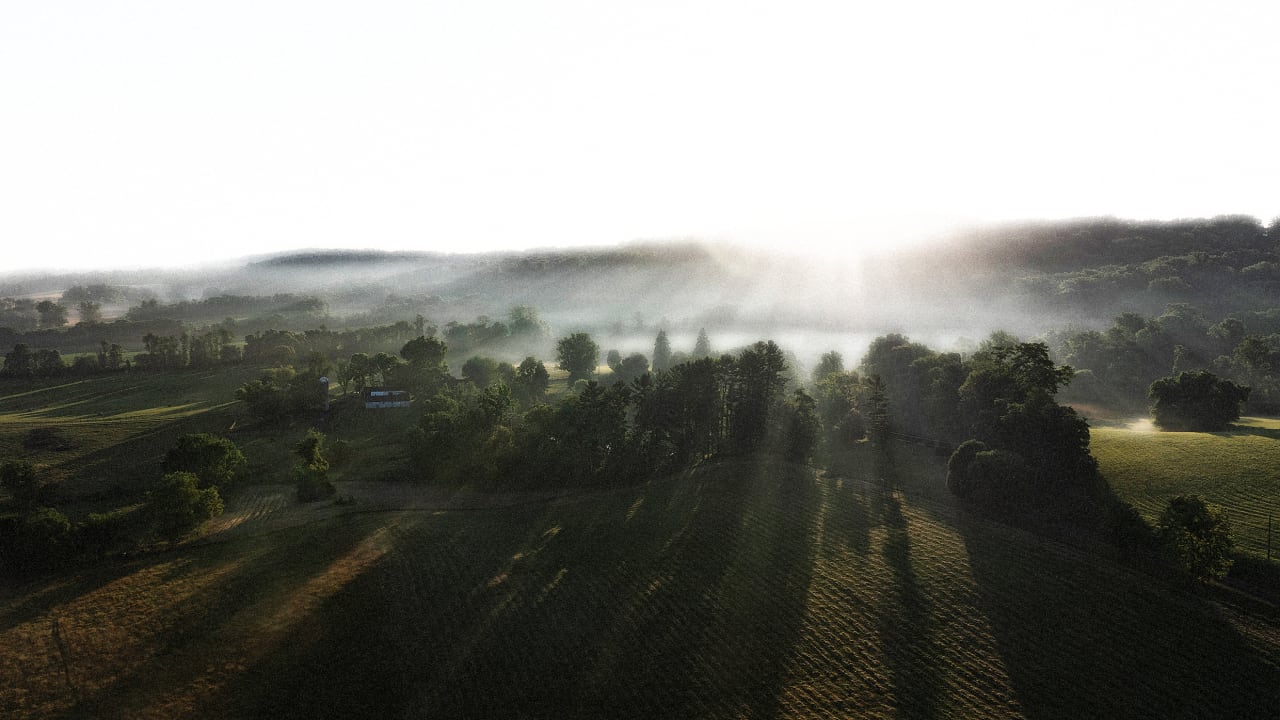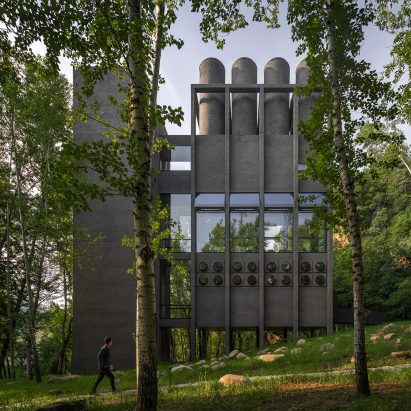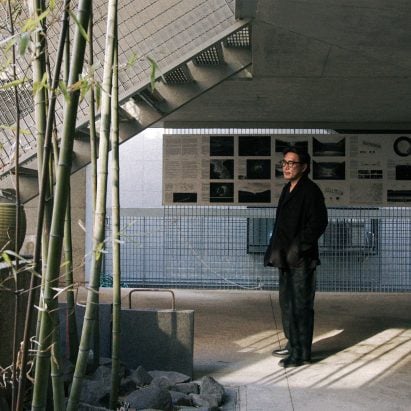
WWW.FASTCOMPANY.COM
Why a Virginia couple donated 80 acres of land to become a community for Black farmers
As you leave Richmond, Virginia, and head roughly an hour southwest into Amelia County, the city fades and the noise dims. Confederate flags snap in the wind, Trump banners hang from homes, and watchful eyes follow strangers through small towns. For some, the quiet brings a feeling of calm, but for many Black passersby, it also brings uneaseand a nervous hope that theyve filled up on gas.Urban farmer Duron Chavis hopes it may soon also bring a sense of belonging and regeneration for a community of Black farmers.Chavis, who manages several prominent urban farms, orchards, and green spaces in Richmond, is the board chairman ofCentral Virginia Agrarian Commons, a new nonprofit working to strengthen the regions food systems by turning land over to Black farmers.Two years ago, the organization received an 80-acre land donation as a form of reparations from white Amelia County residents Callie and Dan Walker. Now, Chavis is working with the couple to turn their family land into arefuge for Black farmers and other farmers of color.The property, a portion of which currently serves as a family farm, will eventually become a multi-functional space where Black farmers can live, work and grow their agricultural enterpriseswithout needing to go into debt.The CVAC has launched farm incubation programs in Richmond and Petersburg, Virginia, that will enable emerging Black farmers to move onto bigger projects on the Amelia County land, where they can access low-cost or free land leases as well as farming equipment.You got to be in a mindset that this is not just for my generation, Chavis says. How were trying to set this up is that this is going to be a move that will elevate generations to come. That takes perseverance, but it also takes having a big imagination.Straight-up reparationsIn 1790, Amelia County had Virginiaslargest population of enslaved Africans, with its 11,790 slaves making up 62% of the countys total population, according to the Inter-university Consortium for Political and Social Research.The daughter of an Amelia County cattle farmer, Callie suspects her ancestors were slaveholders, though she hasnt researched her ancestry to confirm it. There was wealth on my mothers side, and land on my fathers side, she says. What she knows for certain is that the land had a plantation home on it until the 1960s, when her father bought the property and dismantled the house.The Walkers are working with the local NAACP to find descendants of those enslaved on the plantation that was once there. Weve found plenty of descendants, but so far, no farmers, she says.Callie Walker. (Courtesy image)Currently on leave from her role as a United Methodist pastor, Callie now spends most of her time and energy on community volunteerism and growing food for her household. With her husband continuing to work as a pastor, and the couple owning their home, the arrangement works.With no children to inherit her family land, she says, the couple was in a rare position to donate the land to advance their faith-based passion for environmentalism and interracial healing.Initially, they tell Next City, the couple wanted to use the land to build an interracial community through farming. But after learning about the history of Black land loss and encountering Chaviss Black liberation and food justice work, the Walkers chose a different route.We said, Wait, we just want to straight up use it as an act of reparations, says Callie, who also serves on the CVAC board.Callie first encountered Chaviss work in 2012, when he spoke at the Virginia Association for Biological Farmings annual conference. Eight years later, at the same conference, they met in the hallway after a workshop on land justice and began talking. In 2014, the pair worked with several other urban and rural farmers to launch CVAC.In September 2022, after looking into Amelia Countys zoning codes, the Walkers signed a deed of gift drafted byAgrarian Trust, an Oregon-based national land trust working to advance collective land ownership and stewardship through multiracial coalitions. The deed allowed the CVAC to take complete ownership of the land. The Walkers retained 20 acresincluding their hometo potentially develop affordable retirement housing.Since the transfer, CVAC has worked with a design architect to develop a plan for buildings on the land. Agrarian Trust has begunfundraisingto support the construction of the first residence on the land.In the meantime, the CVAC has maintained an arrangement with her family to graze beef cattle on its pastures. The land has been a beef cattle farm for over 50 years, and also had a 30-year crop of pines that was harvested in 2016, and about 30 acres of hardwoods that will hopefully stand for decades to come, Callie says.Providing safe spaces for Black farmers to connect is especially important in rural areas, where Black farmers can often face hostility and isolation, Chavis says.The idea is that we need a place where people can converge, commune, he says. Multiple dorm rooms, kitchen, conference area, and then people can radiate out from there into their farm enterprise. Theyll have a place that they can stay while theyre farming on the property.A long history of Black land lossWhile government leaders, academics, and activists debate endlessly over the question of financial compensation for descendants of enslaved Africans, the Walkers land transfer is part of a growing trend of white landowners engaging in reparative land donations.TheNortheast Farmers of Color Land Trust, led by Soul Fire Farm in upstate New York, calls on landowners to donate land to be farmed by people of color. Across the U.S., theNational Black Food and Justice Allianceis coordinating a reparative effort to reclaim land for Black farmers and secure food sovereignty for marginalized communities.[One study] said that 98% of all farmable land is owned by white people, Dan tells Next City, referencing a2002 analysisas he explains his motivation for the land transfer. Some white people own over a million acres of farmland. We know we can feed people off of very small acreages, but that was just so out of whack, that just blew my mind.Black farmers have long faced systemic barriers to land ownership and retention. At the height of Black land ownership in 1910, Black farmersowned 14% of the nations farmlandmore than16 million acresan incredible feat less than five decades after slavery was outlawed.After the Civil War, newly emancipated Black Americans faced economic and social challenges that made land ownership almost impossible. Many were forced into sharecropping or tenant farming or were pushed off their land altogether. By 1997, Black farmers lost an estimated 90% of that land through lynchings, predatory lending, deceptive legal practices, and legal barriers around inheritance.Today,less than 1%of U.S. farmland is owned by Black farmers. Per one conservative estimate, Black farmers in the United States lost at least$326 billion worthof land during the 20th century.The Walkers encourage other landowners in privileged positions to follow their model. The first step is just to decide to do it, Callie says. Just decide you want to do it, become open, and some relationships are going to start forming. You dont have to know all the details.Callie adds that those leading justice-oriented efforts often dont have the bandwidth to guide donors through the decision-making process. That makes it important for would-be donors to make a firm decision about their intentionand then let your recipients decide the details.People who are doing the work that Duron is doing, people who are doing activist and community organizing work . . . they are busy, she says. They dont have time for people who are trying to figure out what they want to do.This story was originally published byNext City, a nonprofit news outlet covering solutions for equitable cities. Sign up for Next Citysnewsletterfor their latest articles and events.
0 Commentarii
0 Distribuiri
86 Views












